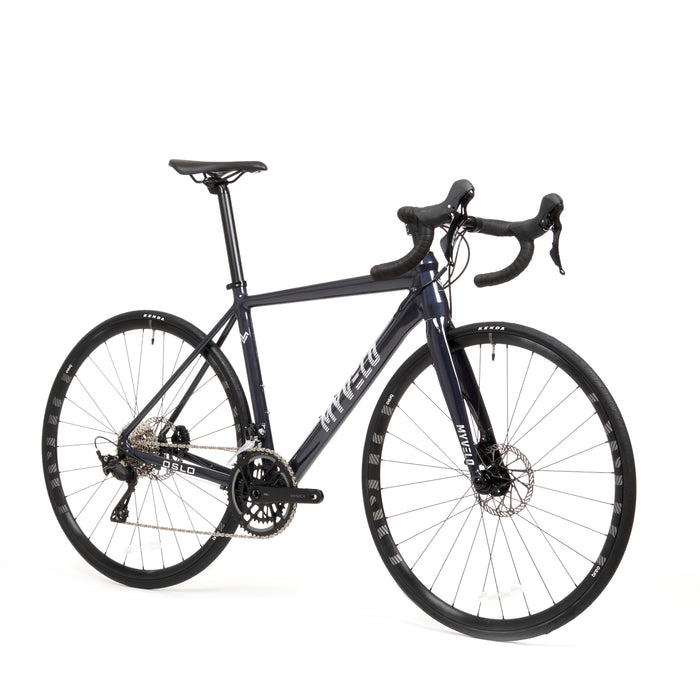
Oslo Endurance Road Bike
incl. FREE shipping & free returns

Whether you're training for your first amateur race or simply want to become faster and more enduring on your road bike, effective training is key. Instead of haphazardly racking up miles for hours, it's worth making targeted adjustments. In this article, you'll learn how to structure your road bike training efficiently and which training principles really matter.
Von Helena Burgardt |
3 minutes read time

Effective training starts with a clear goal. Do you want to:
better endurance on long tours?
work on your sprinting power?
become faster on a certain route?
lose weight and stay fit?
Your goal determines the training content. Long-distance cyclists need a different training structure than ambitious amateur racers who participate in granfondos or cycling marathons.
The most important foundation in road cycling is basic endurance (GA1). It forms the foundation for all subsequent training and improves fat burning, capillarization, and the efficiency of your cardiovascular system.
How to train GA1:
Heart rate range: Approx. 60–75% of your maximum heart rate
Duration: 1.5–4 hours
Intensity: You should be able to hold a conversation easily
👉 Plan at least 1-2 basic training sessions per week – especially in the off-season.
If you want to get faster, intervals are essential. Targeted peaks in exercise challenge your body and provide new training stimuli.
VO2max intervals: 4–6 x 4 minutes at the upper limit, with 4 minutes rest – for more maximum oxygen uptake
Threshold intervals (FTP): 2 x 20 minutes just below the anaerobic threshold – increases your endurance performance
Sprint intervals: 6–8 x 20 seconds all-out with 2 minutes rest – for explosive power
🔁 Important: Interval training is very intensive – treat yourself to active regeneration afterwards!
Even though road cycling is primarily an endurance sport, strength is crucial. It plays a particularly important role in sprints, uphill climbs, and windy conditions.
Training ideas:
Seated hill sprints (5 x 30 seconds on the climb, high gear ratio)
Strength endurance intervals (e.g. 5 minutes at 50–60 rpm with high resistance)
💡 In addition, athletic training away from the bike is also worthwhile – for core stability, knee health and injury prevention.
Training is only the stimulus – adaptation occurs during the break. Effective training therefore also requires deliberately scheduled regeneration phases.
Pay attention to:
At least one rest day per week
Sleep quality: 7–9 hours per night
Relaxed regeneration units (e.g. 60 minutes at a comfortable pace)
🧠 Tip: Use recovery times for stretching, mobilization or mental relaxation.
The better you control your training, the more efficient it will be. Two proven methods:
Heart rate: Easy to get started, but reacts slowly to stress
Power meter (watt measurement): More precise, especially for intervals and race simulations
👉 Those who are more ambitious will benefit significantly from watt measurement and FTP-based training.
Effective training follows a plan – with changing loads and focuses.
3 weeks of stress
1 week of relief
Afterwards: gradually increase
Plan different phases throughout the year:
Basic phase (winter/spring)
Intensification (spring)
Competition/event phase (summer)
Regeneration and Reconstruction (Autumn)
Training is also a mental exercise. If you want to stick with it, you need goals, variety, and small successes.
Motivational tips:
Set measurable intermediate goals (e.g. 20 W more FTP)
Ride with others every now and then – group dynamics are great!
Record training data – progress motivates
Effective road bike training doesn't mean logging as many kilometers as possible, but rather training in a targeted, varied, and intelligent way. With a good mix of basic training, intervals, strength training, and recovery, you'll get the most out of yourself – and stay motivated in the long run.
Want more? Then get on your bike and train smarter, not harder! 💪🚴